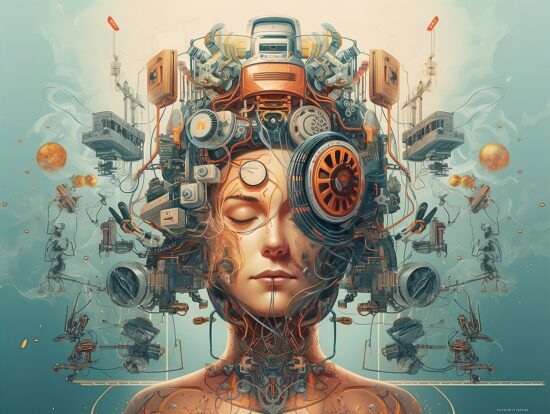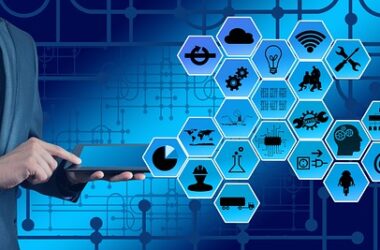The Internet of Things (IoT) has been changing the world everyday, as we know it in the last few years. It’s an entire network that influences our everyday lives in all sorts of ways. According to the recent study, the IoT base will consist of over 30 billion devices by 2020.
Bearing in mind its gigantic impact, it is strange to learn that most people still don’t know what IoT actually represents, so we’ll give you a hand. IoT is the network of physical devices with software and sensors which enable these objects to collect and exchange data.
If it still sounds too strange and futuristic to you, keep on reading. We will show you 7 examples of how IoT has changed our lives already.
A real-life impact of IoT
The global spending on IoT across markets amounted to $737 billion in 2016. Such figures could not be possible if IoT hadn’t already created a big impact in many fields of life and business. In this article, we will present you the 7 most impressive examples.
Transportation
Our first example is probably the one that you could’ve guessed yourself. With IoT, driving and transport became much safer these days. Almost all of the modern vehicles have built-in computers and sensors which allow them to monitor all aspects of the driving: speed, visibility, distances, etc. At the same time, drivers are receiving information about the traffic jam, routes, and navigation.
But this is not all there is since IoT also keeps an eye on car performance in general. A large portion of contemporary vehicles can park by themselves using sensors as their senses, while some of them can break automatically to prevent accidents. Meanwhile, several manufacturers already tested cars without drivers and companies such as Google and Uber received permission last year to do it publicly on the streets of Michigan.
Home automation
Don’t think that IoT is only a matter of the outside world. On the contrary, it is already present in our houses and apartments as well. Today, security systems enable you to control your home over a mobile device while being far away from it. You don’t have to worry about turning off the oven anymore because you can control it remotely. If you leave the kids alone at home, you can monitor the door opening for extra attention. There are all sorts of smart devices out there – fridges and TV sets, you name it.
Healthcare
Two years ago, Goldman Sachs announced that the U.S. healthcare system should save more than $300 billion in the years to come thanks to IoT. If you are wondering how this is possible, just take a look at some elements in which IoT influences healthcare:
Data management: Using IoT devices like scanners or monitors, medical facilities are able to gather information about their patients, which helps them to react promptly and improve patient care.
Remote monitoring: With IoT, most of the patients don’t really need to be hospitalized. They can stay at home and still feel safe due to remote monitoring. Additionally, this type of service drastically reduces costs of a hospital.
Diabetes control: Diabetes is one of the most widespread diseases globally, which was the reason to create special apps to control it. Such self-management wearables constantly monitor the condition of a patient and send insulin reminders.
Senior monitoring: Seniors always demand extra attention when it comes to medical care. With IoT gadgets, it is easier to keep an eye on them and give them a hand if needed.
These are only a few examples of how IoT improves healthcare. We didn’t mention blood pressure apps, drug management, smart beds, and many other services – but you get the point anyway.
Manufacturing
IoT enabled companies to connect and successfully monitor all aspects of manufacturing. Using smart machinery, sensors, and production lines, manufacturers can locate and track goods through bar codes in real time. This way, they eliminate a bunch of common man-made mistakes and reduce costs significantly. At the same time, IoT automates many processes and allow manufacturers to conduct last-minute changes if necessary.
Today, it is easier to follow the stocks, prevent potential production breakdowns, respond to product demand promptly, or reduce operational costs. In the era where customer experience is the most important brand differentiator, it is crucial to delivering more customized products. This is another benefit of IoT in manufacturing as it has the potential to personalize production so as to fit individual needs of the consumers.
Retail
Contemporary retail stores are relying on location-based technology to attract more customers. This is the method inspired by the widespread mantra that it’s important to “deliver the right message to the right person at the right time”. And it works well: a survey showed that almost one-half of consumers react positively to location-based offers.
There are many ways to use IoT in brick-and-mortar stores. For instance, geofencing is a virtual fence which knows when a customer is inside and invites him or her to shop and use coupons or promotional offers. However, retailers use a variety of other strategies such as beacons, sensors, smart lighting, and many other.
IoT in business
Of course, businesses were the first ones to realize the potential of IoT. That’s why almost 60% of companies already adopted this technology. For instance, they can use it to gather information about their clients and customers, which is why data science became a huge thing over the last few years.
IoT also raised project management to the higher level, boosting collaboration among team members through mobile devices, computers, and other smart gadgets. This type of technology skyrockets employee engagement and improves goal-oriented business.
Additionally, IoT helped companies to improve recruiting procedures, enabling HR managers to find the most suitable candidates. It makes onboarding simpler and boosts employee retention, online learning and training procedures, succession management, etc.
Environment
IoT helps us all to contribute to the higher cause – our environment. IoT devices measure air quality and even give recommendations how to prevent further pollution of natural resources. This technology gives companies and individuals the possibility to control irrigation systems and maintain their farms, gardens, and golf courses.
A small-sized smart sensor is now able to recognize water quality, airborne pollution, or even radiation. It helps people with health issues but also parents to keep their kids away from polluted areas. In the Netherlands, they use sensors to monitor tulip production. So the potential of IoT in environment preservation is practically unlimited – you just didn’t notice it so far.
Conclusion
Most people don’t really recognize that IoT has changed our lives already. In this article, we tried to show you only the most significant examples – from healthcare and retail to business and environment.
But this topic is so immense that it would take us a lot more time and text to explain it all, so don’t hesitate to let us know in comments if you have more inquiries about the subject.
Guest post by Sarah Loise
Sarah is a member of the MyMathDone.com team, which is in charge of content creation and website maintenance. Also she uses her in-depth knowledge of commercial legal matter, commercial off-the-shelf systems, marketing and engineering in business consulting for young entrepreneurs.







